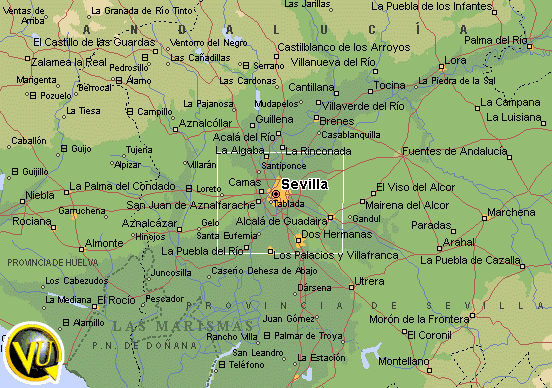
SPAIN : Seville
|
Tuition of 20 or 30 group lessons per week, Hispanic studies, elderly courses (50 and up), Spanish for "conversation and grammar survey".
|
Tuition Programs
- 1 lesson: 50 minutes
- Minimum age: 18
- Schedule: from 9:15 AM to 5:40 PM.
- Maximum 12 students per class, average 8.
- Test and certificate of attendance
- School Material
- All levels available
- Standard courses: 20 lessons per week. Minimum 6 per class, maximum 12. Minimum age: 17
- Intensive courses: 20 or 30 lessons per week, minimum 3 per class maximum 6. Minimum age: 20
- Spanish for "conversation or grammar survey" or Hispanic studies: 10 lessons per week to be added to the standard courses (20 lessons par week).
- Hispanic studies: Advanced level only.
- Free Social and cultural activities organized (10 to 15 hours per week), if not low costs will be paid
- Multimedia center, video.
- Elder courses: Standard courses + activities and visits 4 times a week including museums, airport transfer at arrival to your accommodation, welcome party, 1 full day excursion per week (Saturday), 1 theater evening and dinner with the teacher.
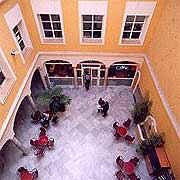
|
 |
Starting Dates
| Jan |
Feb |
March |
April |
May |
June |
July |
Aug |
Sep |
Oct |
Nov |
Dec |
| 7,21 |
4*,18 |
4*,18 |
1,15,29 |
6*,20 |
3,17 |
1,15,29 |
5,19 |
2,16,30 |
14,28 |
4,11**,18 |
2,9 |
* Elderly courses start on these dates
** Elderly course only start on that day.
Closing Dates
| Feb |
April |
May |
Aug |
Oct |
Nov |
Dec |
| 28 |
13,13 |
1,4,30 |
15 |
12 |
1 |
6 |
The school will be closed during Easter week from March 25th to 31st, 2001.Students will have a special activities program during this week.
From April 15th to 21st will take place the famous "Feria de Abril" (dances festival and equestrian parade), very popular. Please reserve very early for this period.
The last day for 2002 will be on December 20st.
Options Available
- Airport Transfer / accommodation (one way): 41
- Additional day:
in family, single or double: 23
residence single 23 double 19
shared apartment 18
apartment studio 37
- Week supplement in family for 3 meals a day 44
- Tuition for 24 weeks and up (maximum 32 weeks): upon request
- Private tuition: upon request
- EXAMS: possibility to get (upon request):
Business spanish (Certificado Superior de Espaρol de Negocios): Madrid Chamber of commerce
D.E.L.E. Spanish as a foreign language
- Our prices are available from January 1st to December 31, 2002. These prices never include the Air Fare.
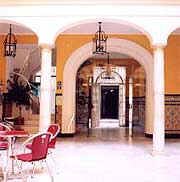
|
|
Family, residence, shared apartment or studio apartment accommodation.
- Arrival on Sunday.
- Departure on Saturday.
- In family, single or double* occupancy, 2 meals a day, laundry service.
- In residence, meals not included, single or double * occupancy, walking distance to the school, shared bathroom, TV area, shared kitchen.
- In shared apartments with young Spanish students, meals not included, single or double * occupancy.
* for 2 people coming together
- Studio apartment: standard or superior. Central located. All furnished, TV, bedroom, living room, kitchen and shower. Double or single occupancy.
Fees in Euros :
Family:
2 weeks single / double: 300 / 278
Any additional week: single/double 127 / 116
Shared apartment:
2 weeks single / double: 207 / 196
Any additional week: single/double 78 / 67
Students residence:
2 weeks single / double: 312 / 244
Any additional week: single/double 130 / 108
Studio apartment:
2 weeks: 480 (+ 84 for superior apartment)
Any additional week: 227 (+ 39 for superior apartment)
Our greeting families are recruited with great care. The criteria of selection are very rigorous and each family must satisfy a precise schedule of conditions: excellent morality, desire to communicate with their host, satisfactory social standing. We should specify that the families will only speak with you the language of the country where you will be. It is the principle of the immersion courses!
|
|
Town information's
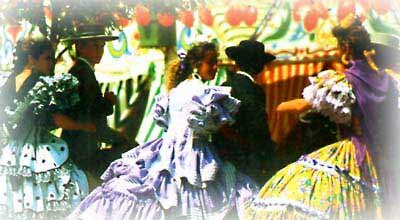 Capital of the province of the same name and Andalusia on Guadalquivir. One recorded there the certain hottest temperatures of Europe up to 48 degrees c Commercial and industrial city, Seville was under Arab domination from 712 to 1248 and knew its apogee of the XVI to the XVIII century. Fatherland of the painters like Vιlasquez and Murillo. Capital of the province of the same name and Andalusia on Guadalquivir. One recorded there the certain hottest temperatures of Europe up to 48 degrees c Commercial and industrial city, Seville was under Arab domination from 712 to 1248 and knew its apogee of the XVI to the XVIII century. Fatherland of the painters like Vιlasquez and Murillo.
The old city contains the largest monument of Gothic art of the world: the cathedral Giralda. It shelters also celebrates it palate fortress of Alcazar, where are juxtaposed several styles, and fascinating it Jewish district of Cruz, where lived Murillo. Seville certainly is one of the most beloved places by visitors to Spain. Although today Moorish influence is architectonically most evident - Andalusia was occupied by Moors for about 800 years - it has been a cultural center long before. The fertility of this land and its favorised climate with mild winters and about 3000 hours of sun per year (if you ever have visited it in August, where temperatures can arrive to some 47°C, perhaps you will deny to call it favorised) made Phoenicians and Carthaginians settle here. Later came Romans, like almost to any place in Europe, and two of their emperors, Trajan and Hadrian, in fact were born here.
 Also later on Seville was the home of famous and infamous figures of history, the legendary "Don Juan" started from here to conquer the hearts of women across all Europe, while Columbus started from a port close to Seville to discover a new world. Prosper Merimιe's "Carmen", who couldn't make her decision between the officer Don Josι and the bullfighter Escamillo - the consequences you can watch still today in opera houses - was a worker in Seville's old tobacco factory. By the way, this factory serves today as University, a fact that might give you a glimpse on Andalusian talent for improvisation. Also later on Seville was the home of famous and infamous figures of history, the legendary "Don Juan" started from here to conquer the hearts of women across all Europe, while Columbus started from a port close to Seville to discover a new world. Prosper Merimιe's "Carmen", who couldn't make her decision between the officer Don Josι and the bullfighter Escamillo - the consequences you can watch still today in opera houses - was a worker in Seville's old tobacco factory. By the way, this factory serves today as University, a fact that might give you a glimpse on Andalusian talent for improvisation.
When you visit this city, you are in the very heart of Andalusian culture, the center of bullfighting and Flamenco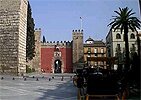 music. Take yourself time and take life easy, as Andalusians use to do, and interrupt sightseeing from time to time to have a few "tapas", those typical "small spanish dishes", and a glass of Sherry wine in one of the probably thousands of bars in this city, and consider a few of the hints on the following pages to make your stay a memorable one. music. Take yourself time and take life easy, as Andalusians use to do, and interrupt sightseeing from time to time to have a few "tapas", those typical "small spanish dishes", and a glass of Sherry wine in one of the probably thousands of bars in this city, and consider a few of the hints on the following pages to make your stay a memorable one.
Worth Visiting:
Catedral. Built in the 15th century on the site of the largest Almohad mosque, this is the third largest church in Christendom.
Giralda. A former Almohad minaret dating from the 12th century. Hernan Ruiz's bell-tower was added in the 16th century, as was the weather-vane at the top, known as "El Giradillo". Regarded as the symbol of Seville, it is one of the most beautiful towers in the world.
Royal Fortresses. a beautiful Mixture of the Mudejar, Gothic and Renaissance styles, reflecting the two great cultures that created it: Islam and Christianity.
Tower of Gold. A 13th-century Almohad fortification on the banks of the River Guadalquivir. Its moment of greatest fame came after the discovery of America when it marked the point of arrival for the ships sailing from the Indies.
District of Santa Cruz. Formerly a Jewish quarter, this is a typical district with lovely streets, like La Pimienta, and little squares like Santa Marta and Santa Cruz. The latter contains the "Locksmiths' Cross", and intricate 17th-century creation in wrought iron.
General Archive of the Indies. Inside this Renaissance building, originally intended as a merchants exchange, is a massive collection documents on the voyages of discovery of the 15th to 19th centuries.
Provincial Museum of Fine Arts. This Baroque building, formerly the Convent of La Merced, contains paintings by Murillo, Valdes Leal, Zurbaran, El Greco, Alonso Cano and others.
Casa de Pilatos. It is arguably Seville's top aristocratic town mansion and it is the only one open to the general public. Exemplifies beautifully the typical Andalusian use of glazed tiles for decorative effect.
Cartuja. The Park of Discoveries. One of the largest theme parks in the world. It makes use of some of the infrastructure and part of the grounds where Seville's Expo 92 was held. Closed for remodeling until June, 1996.
Shopping:
Seville has a rich tradition in various types of handicraft. Examples are the ceramics of La Cartuja (Calle Alfonso XII, 25) and the wrought iron of Forja Hispalense(Calle Feria, 130). For tooled leather, go to San Pablo in Calle Bailen; and for mantillas and embroidery, try Feliciano Foronda (Alvarez Quintero, 52). It is also worth visiting the street market held on Tuesdays in Calle Feria. Home-made sweets are sold at many of the city's convents: particularly recommended are the so called yemas de San Leandro (Convent of San Leandro, Plaza de San Ildofonso).
Nightlife
I n Seville, a round of drinks after dark is as much de rigor as a round of tapas before lunch. The liveliest areas are to be found around Plaza de la Alfalfa, Calle Marques de Paradas. n Seville, a round of drinks after dark is as much de rigor as a round of tapas before lunch. The liveliest areas are to be found around Plaza de la Alfalfa, Calle Marques de Paradas.
On Summer evenings the taverns in the villages just outside the city, known as the ventanas sevillanas, are very popular and people make trips out to places like Velazquez Gavino in La Panoleta, Manolo in La Algaba, and the Ventorrillo Canario in Santiponce.
Seville weather forecast
|

